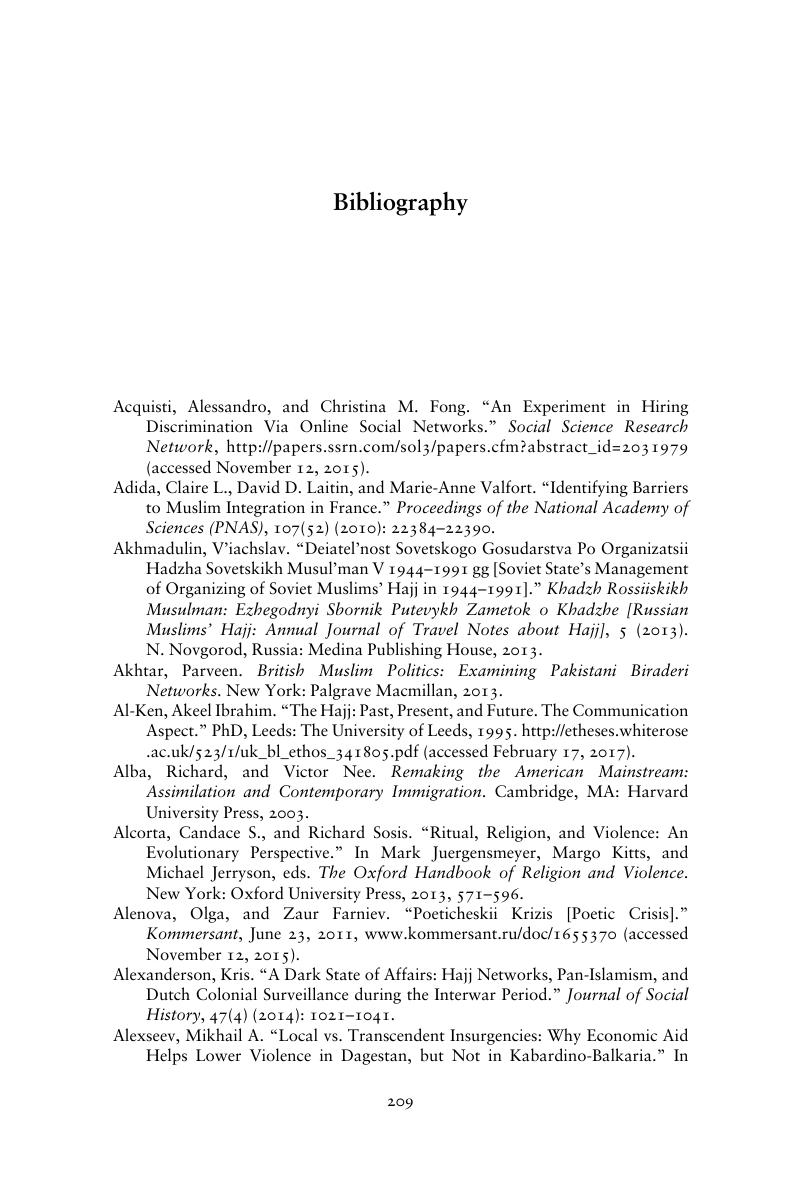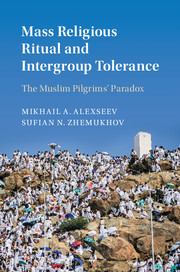Book contents
- Mass Religious Ritual and Intergroup Tolerance
- Cambridge Studies in Social Theory, Religion, and Politics
- Mass Religious Ritual and Intergroup Tolerance
- Copyright page
- Dedication
- Contents
- Figures
- Tables
- Acknowledgments
- Introduction
- Part I The Pilgrims’ Paradox
- Part II The Hajj Model of Social Tolerance
- Part III Beyond the Hajj
- Conclusion
- Notes
- Bibliography
- Index
- References
Bibliography
Published online by Cambridge University Press: 20 July 2017
- Mass Religious Ritual and Intergroup Tolerance
- Cambridge Studies in Social Theory, Religion, and Politics
- Mass Religious Ritual and Intergroup Tolerance
- Copyright page
- Dedication
- Contents
- Figures
- Tables
- Acknowledgments
- Introduction
- Part I The Pilgrims’ Paradox
- Part II The Hajj Model of Social Tolerance
- Part III Beyond the Hajj
- Conclusion
- Notes
- Bibliography
- Index
- References
Summary

- Type
- Chapter
- Information
- Mass Religious Ritual and Intergroup ToleranceThe Muslim Pilgrims' Paradox, pp. 209 - 222Publisher: Cambridge University PressPrint publication year: 2017



